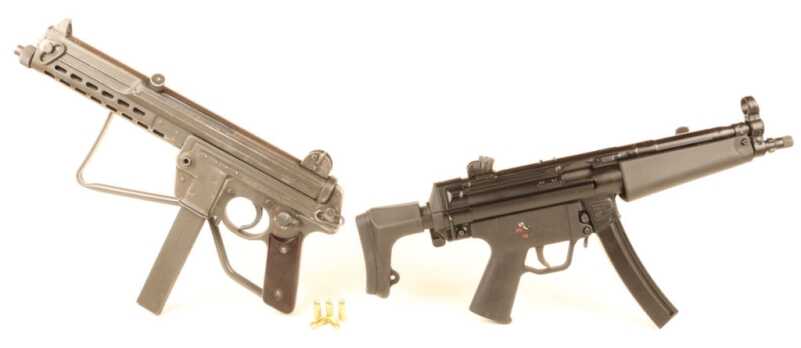
The Walther MPL (left) is a fundamentally different weapon from the HK MP5. While they both throw the same 9mm bullets, each gun represents a unique approach to the mission.
On April 24, 1980, the US military launched the most complex deep penetration Special Operations mission in history. Planned to span two full days in enemy territory, Operation Eagle Claw involved dozens of aircraft, numerous covert CIA assets, and hundreds of Special Operations personnel. The overall scheme of the operation involved the establishment of forward operating bases, an airfield seizure, the use of a sports stadium as a landing zone, and ultimately the liberation of fifty-two American hostages held in the center of the bustling capital of Iran. The mission’s failure toppled a President, sparked the creation of the US Special Operations Command, and arguably precipitated the rise of radical Islam that poisons the planet even today.
Eagle Claw was the first major operation for Special Forces Operational Detachment-Delta, America’s premier counter-terror special missions unit. While Delta is a respected and refined strategic tool available to our National Command Authority today, it was in its infancy in 1980. The brainchild of Special Forces Colonel Charlie Beckwith, Delta was built as the result of impressions Beckwith gained after an officer exchange spent with the British Special Air Service.
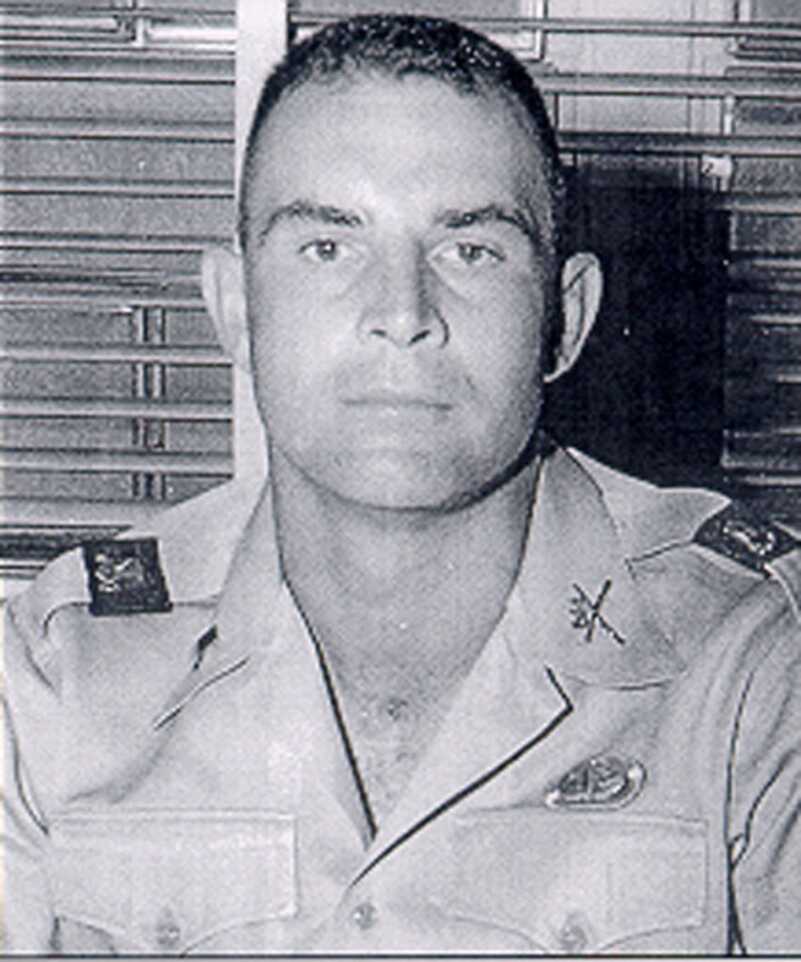
Colonel Charlie Beckwith founded the US Army’s Delta Force after a stint spent as an exchange officer with the British Special Air Service.
In its earliest days Delta employed weapons drawn from American military stores. That meant CAR15 assault rifles and M3A1 Grease Gun submachine guns. As the unit found its stride they transitioned to the Walther MP 9mm subgun. This stamped steel weapon was arguably the finest open bolt pistol caliber submachine gun ever made.
The Walther Maschinenpistole
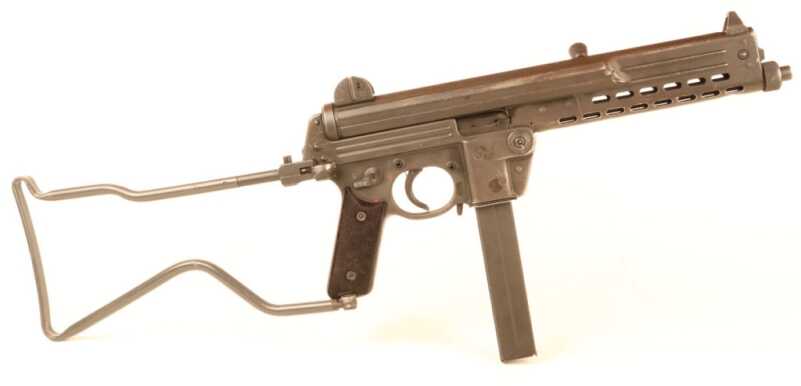
The Walther MPL is built almost entirely from inexpensive sheet steel stampings. The end result is rugged and easy to make.
The WW1-era German MP18 was the world’s first truly successful general issue open bolt submachine gun. The purist refers to this method of operation as Advanced Primer Ignition (API). This means that the bolt is held to the rear over spring compression by a sear connected to the trigger. When the trigger is squeezed the bolt is released to run forward and strip a round from the magazine. A fixed firing pin typically milled into the bolt face detonates the round just as the bolt closes. Recoil forces press the bolt back to repeat the firing sequence.
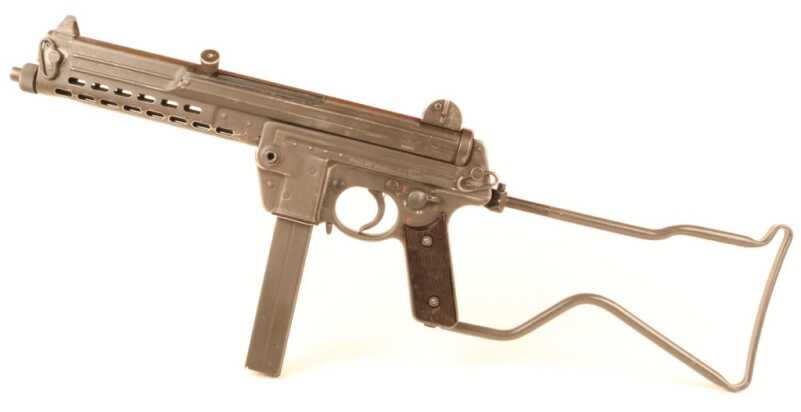
The Walther MPL is built almost entirely from inexpensive sheet steel stampings. The end result is rugged and easy to make.
Benefits of the API system include enhanced cooling, mechanical simplicity, and reliability. Detriments include degraded accuracy due to the gun’s prodigious reciprocating mass. The Walther MP represented the apogee of the genre.
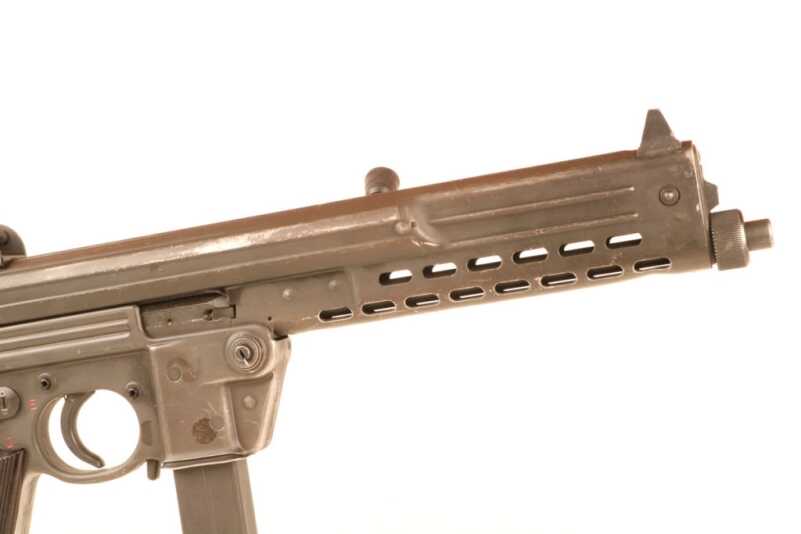
The bulbous top component of the MPL encompasses the gun’s massive bolt as-sembly. The mass of this component is what keeps the gun’s rate of fire slow.
Built between 1963 and 1985, the Walther MP came in two variations. The longer variant called the MPL sported a 10.2-inch barrel and weighed 6.6 pounds. The stubbier MPK was about four inches shorter and half a pound lighter. With a sedate rate of fire of around 550 rounds per minute, the MPL fed from a 32-round magazine and was remarkably controllable. These guns came standard with a side folding wire stock and a unique two-tier sight system.

The side folding wire stock of the MPL is serviceable enough though not as comfortable or stable as the MP5 version.
The top portion of the sight consisted of a pair of grooves for quick engagement. A second peep sight system was included underneath for more precise applications. This gun was used by Portuguese Special Forces, the West German Police, and sundry other smaller agencies in addition to Delta Force.
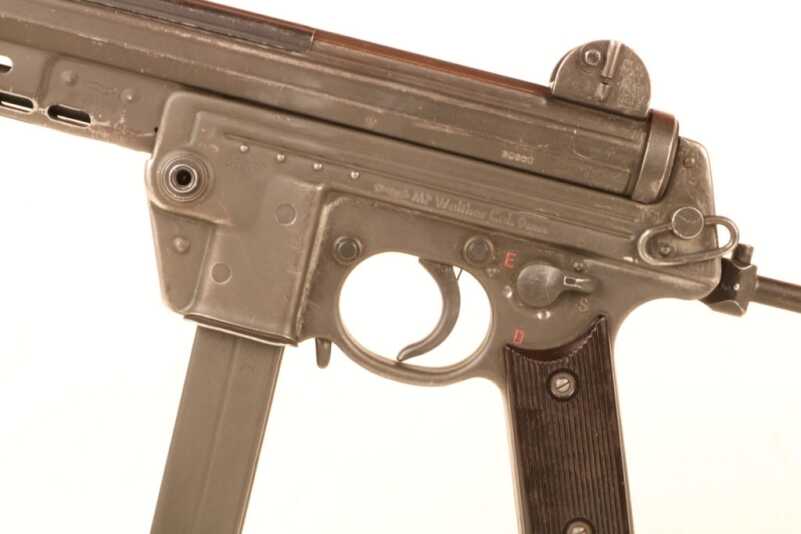
Both the upper and lower receivers of the MPL start out as sheet steel flats that are formed into shape and welded in place.
Operation Eagle Claw ended precipitously after a taxiing Navy RH53D helicopter collided with an Air Force EC130 in the sandy darkness at Desert One, the mission’s clandestine Iranian staging base. The resulting conflagration claimed the lives of eight American servicemen and grievously injured another four. The fallout from this failed operation set American prestige on the world stage back a generation.
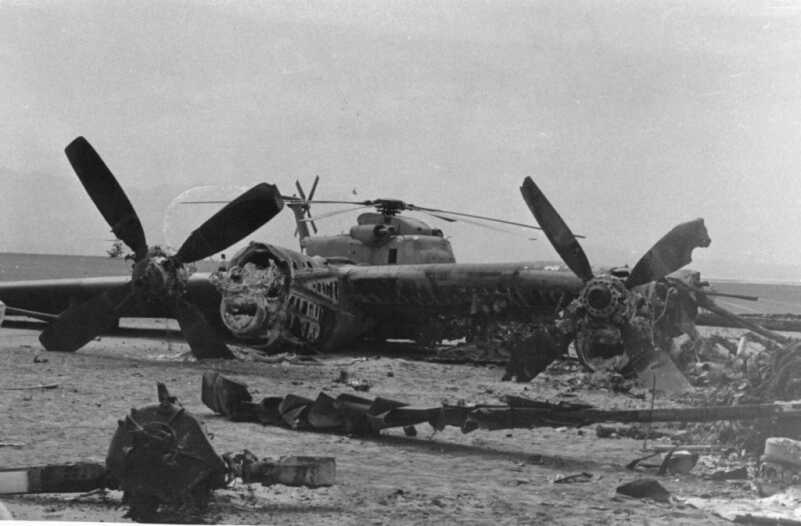
The failed mission to rescue the American hostages held in Iran toppled a President and delivered a serious blow to American prestige around the world.
Operation Nimrod
A mere five days after the explosion at Desert One a group of six Iranian revolutionaries seized the Iranian embassy at Princes Gate in London. The hostage-takers were Arab separatist members of the Democratic Revolutionary Front for the Liberation of Arabistan. They demanded the release of prisoners held in Iran in exchange for the lives of their twenty-six hostages in England.
The situation in London settled into an impasse with the terrorists making demands and the police attempting to accommodate them. All the while the British Special Air Service was staging for an assault should the need arise. On Day 6 of the siege, the separatists executed Abbas Lavasani, the Iranian Chief Press Officer, and the SAS was given the green light to take down the embassy.
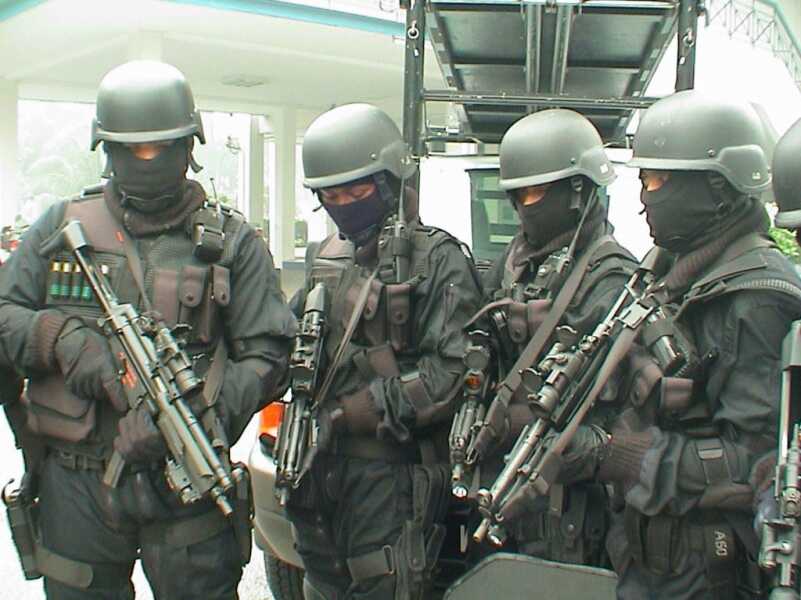
In the aftermath of the successful mission to take down the Iranian embassy in London by the SAS black fatigues and HK MP5 submachine guns became ubiquitous features among counter-terrorist teams around the world.
The Iranian embassy takedown was not without its unexpected wrinkles, but it proceeded under the noses of the International press and was fabulously successful. Images of black-clad SAS operators wearing respirators and wielding HK MP5 submachine guns were beamed around the planet in real time. The black fatigues and gas masks were chosen intentionally to give the assaulters a more menacing, otherworldly appearance. Seventeen minutes later five of the six terrorists were dead, and all but one of the hostages were freed unharmed.
The Iranian Embassy takedown took place on a Monday that was also a bank holiday, so millions of people watched it unfold live on television. The images that resulted became iconic. Operation Nimrod cemented Margaret Thatcher’s place in history and has been described by some historians as the greatest feat of arms in the history of the British Empire. In the immediate aftermath, the two TA regiments of the SAS were swamped with applicants. Additionally, every police officer in the free world wanted a pair of black fatigues hanging in his closet and an MP5 in the trunk of his squad car.
The Heckler and Koch MP5
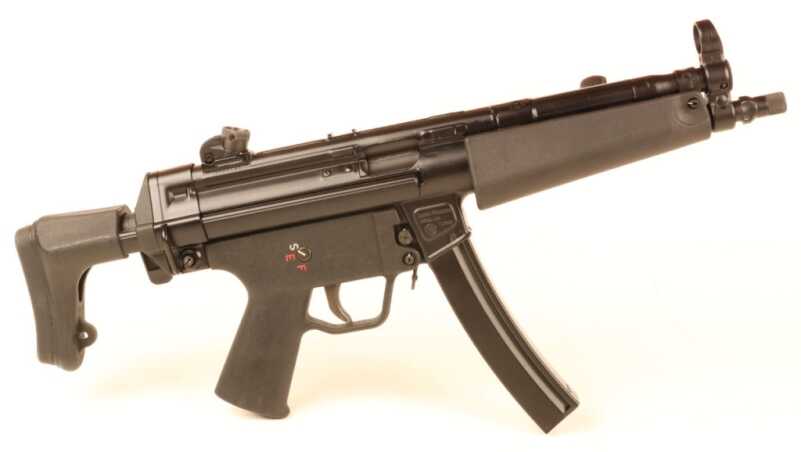
The HK MP5 is a complex yet precise tactical tool. The complicated roller locked action is the smoothest ever made.
The recoil-operated delayed roller-locked action of the MP5 arose from the ashes of the Second World War. Originally pioneered in the MG42 General Purpose Machine Gun, this system of operation powered the StG45, a prototype assault rifle that died with the Nazi capitulation. The design was spirited to Spain along with several of the gun’s designers and ultimately became the Spanish CETME assault rifle.
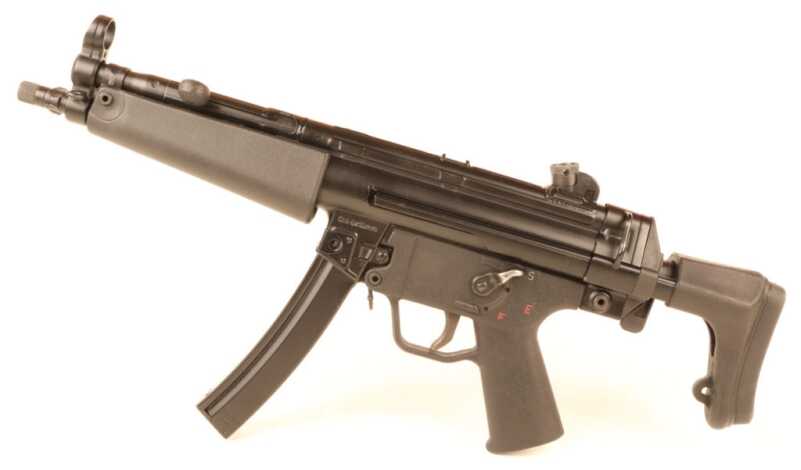
The HK MP5 is a complex yet precise tactical tool. The complicated roller locked action is the smoothest ever made.
The CETME was eventually repatriated to West Germany where it morphed into the G3 in 7.62x51mm. The same basic design was also offered in 5.56x45mm and 7.62x39mm. In 1964 the action was adapted to run the 9mm Parabellum round and christened the HK54. In 1966 the gun was offered for LE and military purchase as the MP5.
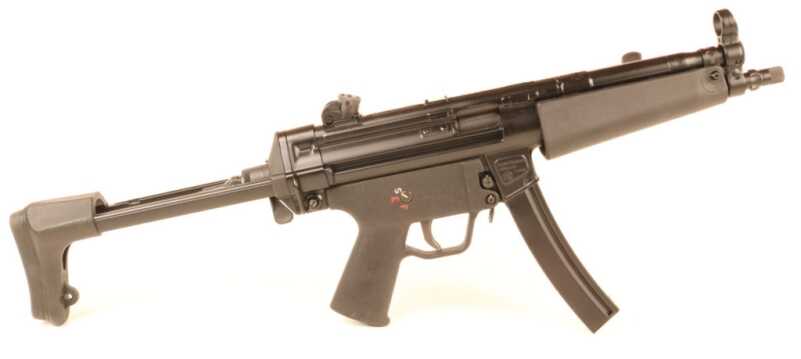
The HK MP5 is a complex yet precise tactical tool. The complicated roller locked action is the smoothest ever made.
Where the guts of the MPL are rugged and simple, the entrails of the MP5 resemble a sewing machine. The gun has scads of parts and was one of the world’s first truly modular weapons, having been offered with fixed and collapsible stocks, sound suppressors, and stubby concealable variants. The end result of the gun’s closed-bolt locked-breech action was an exceptionally smooth and accurate weapon that was imminently controllable.
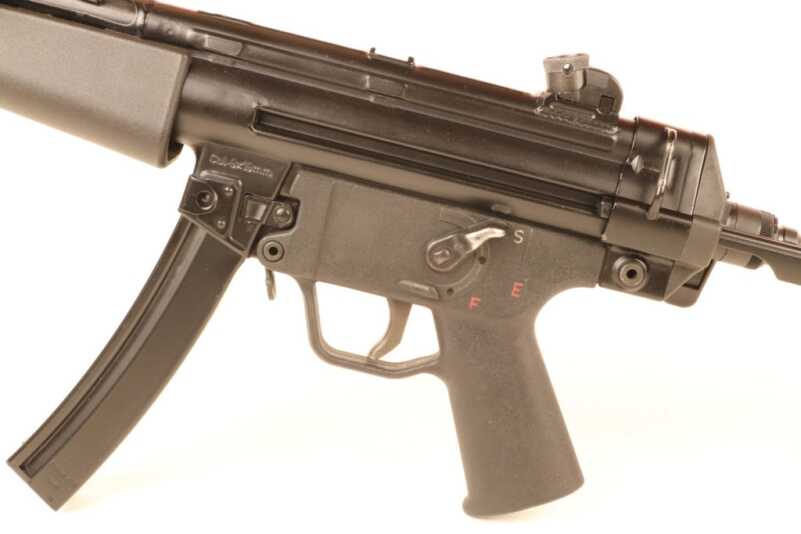
The HK MP5 is a modular design. Different stocks, fire control units, and muzzle attachments fundamentally change the gun’s personality.
Apples and Oranges
Operation Eagle Claw was as different from Operation Nimrod as Republicans are from Democrats. Eagle Claw was staged halfway across the planet right in the middle of an enemy nation’s capital city. The target was a sprawling compound, and there were fifty-two hostages in need of rescue. By contrast, Nimrod involved a single building that could be accessed across town. The United States was the only nation in the world with the assets to consider an operation as broad in scope as Eagle Claw, and it almost worked.
Nimrod established the world standard for professionalism and tactics in counter-terror operations. Techniques pioneered by the SAS went on to pollinate similar units around the world. This typically secretive unit got more attention than it wanted, but they changed the way free men kill terrorists in the process.
The Walther MPL is the ultimate example of a general utility submachine gun. In the roles filled by the wartime German MP40, American Grease Gun, Russian PPSh, and British Sten the MPL is quite literally ideal. The rate of fire is slow, and the gun is rugged and simple.
By contrast, the MP5 fires much faster and is really a specialist’s weapon. In the hands of a trained operator, the MP5 puts a swarm of zippy little 9mm bullets into teacup-sized groups at bad breath ranges. When employed in a swamp or powdery desert environment, however, the complexity of the MP5 becomes a liability.
Trigger Time
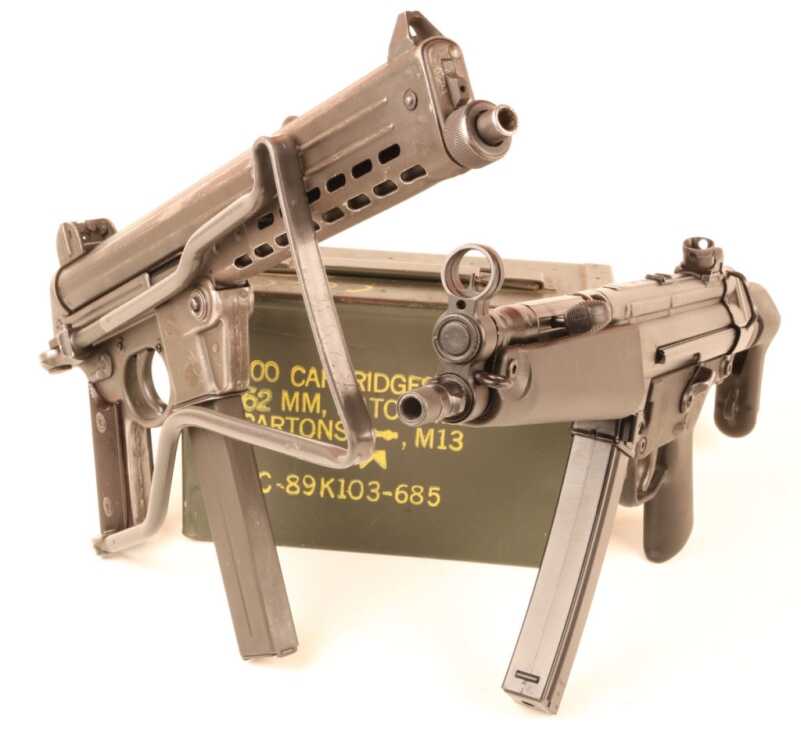
The Walther MPL (left) and the HK MP5 followed very different historical trajectories. But for a few relatively minor details their paths could have been ex-changed.
Both guns enjoy a strangely similar manual of arms. The charging handles are both on the left front of each weapon, and the magazine releases are both directly behind the magwells. Once the MPL runs dry the operator retracts the charging handle and automatically locks the bolt to the rear. Releasing this appendage allows it to run forward under spring power, as it does not reciprocate with the bolt. Swap out the empty magazine for a fresh one, point the gun, and squeeze. The fire control lever has three positions like that of the M4. However, these three positions are safe, full, and semi, rather than safe, semi, and full.
In the case of the MP5 the charging handle is retracted and locked in its retention slot, the magazines exchanged, and the charging handle then slapped down and released. The charging handle does not reciprocate with the action on the MP5 either. The fire controls on the MP5 are offered in a variety of flavors but are most typically safe, semi, and full rotating through about eighty degrees. Some trigger packs sport bilateral levers, but most do not.
The MPL chugs along nicely such that singles and doubles are easy with a disciplined trigger finger. The MP5 is markedly faster yet thoroughly controllable with proper technique. Magazine changes are faster in the MPL but not quite as cool, if that matters at all.
The sliding stock of the MP5 offers a more stable firing platform than does the wire version on the Walther gun. The barrel on the MPL can be exchanged at the user level without tools. Swapping out the barrel on the MP5 requires a dedicated apparatus and an engineering degree.
Ruminations
In the aftermath of these two operations, the MPL died a natural death, while the MP5 has seen worldwide usage and remains in production even today. Eagle Claw failed not because of cowardice, poor planning, or substandard training, but rather because of excessive complexity and Mr. Murphy’s unwelcome intrusion. There were simply too many moving parts.
In the final analysis, the Iranians and by extension jihadists everywhere saw the failure at Desert One as a turning point in their war against the West. In previous examples, particularly the 1967 and 1973 wars against the Israelis, secular Arab armies were handily defeated despite overwhelming superiority in combat power. In Iran in 1980 radical Shiite Muslims defeated the world’s greatest superpower. When combined with our retreat from Beirut in the aftermath of the Marine barracks bombing in 1983 radical Jihadists were emboldened to ultimately form Al Qaeda and ISIS. Muslim religious leaders made a convincing argument that radicalization was what reliably led to Allah’s blessing.
These two operations warrant detailed study by any dedicated student of small arms and military tactics. The lessons learned from each shaped today’s military landscape. However, it is thought provoking to imagine where the world might have gone had these two outcomes been reversed.
Had Eagle Claw seen the successful rescue of fifty-two imprisoned Americans Jimmy Carter would likely have been re-elected with a groundswell of support. His liberal ideals would have been irrevocably woven into the fabric of government, and Ronald Reagan would be remembered today as nothing more than a modestly successful Hollywood actor. The Walther MPL might also have ridden the wave to find the same sort of commercial success enjoyed by the MP5, its chief competitor at the time.
By contrast, had Nimrod failed spectacularly on international television Margaret Thatcher’s government would most likely have fallen with it. The SAS could have received a black eye from which it might never have recovered, and the MP5 could have easily descended into obscurity. It makes for an interesting intellectual exercise to ponder how our world might have fundamentally changed had things gone just a little bit differently.
Note: while the Walther MPL submachine gun can typically only be found as a restricted dealer sample in the US, the MP5 we used for this project was built on a newly manufactured Zenith MKE Z5-RS pistol (www.zenithfirearms.com). These fine guns turn up on GunsAmerica from time to time.
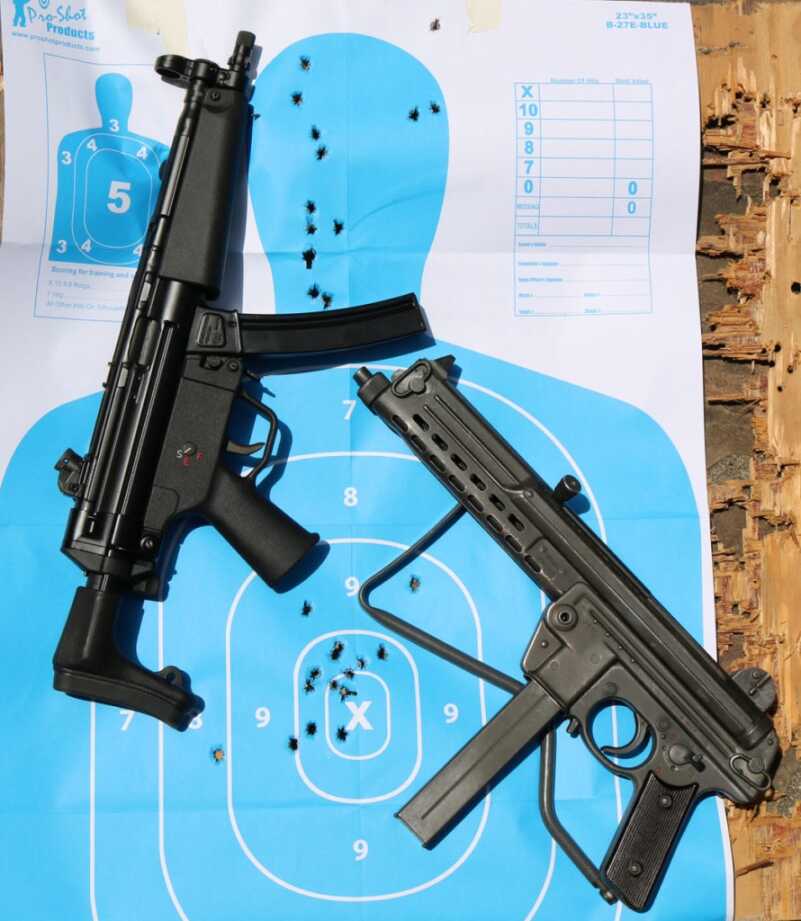
As can be seen from these two fifteen-round bursts, I actually shoot a little bit better with the MPL (bottom). The MPL’s sedate rate of fire and front-heavy architecture contribute to controllability.
Technical Specifications
Walther MPL HK MP5
Caliber 9mm Para 9mm Para
Barrel Length 10.2 inches 8.9 inches
Overall Length 29.4/18.2 inches 27.6/21.7 inches
Action Blowback Roller-Delayed Blowback
Magazine Capacity 32 rounds 30 rounds
Rate of Fire 550 rounds per minute 800 rounds per minute

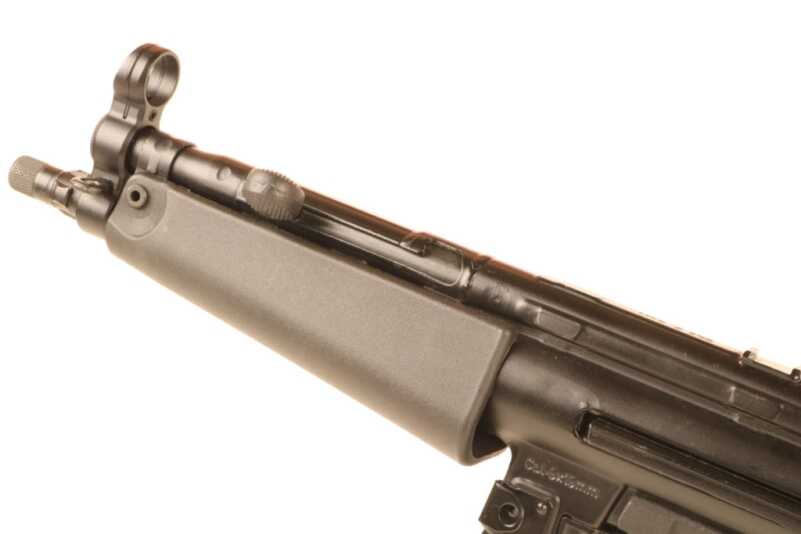
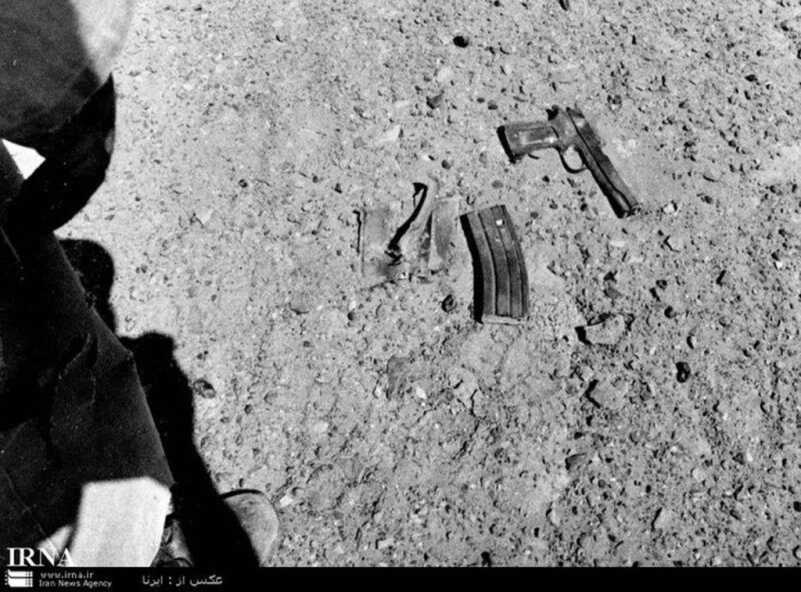

I actually learned a few things in this article. Thanks it was a great read
I’ll take one of each please! Thank you. Both are great sub’s. It would be super sweet to see a brand new updated walther with a modern stock set up, forend and optic mount. Short rail for reflex sight. Would be awesome since hk updated the mp5 numerous times.
I believe the Walther is on the left in the opening photo.
Nice article, thank you.
Great article. Even worth a second read.
This is one of the better articles that I’ve read on this blog. Clear review of the and comparison of the arms woven in with the history of the time. Well done!
Nice read, thanks.